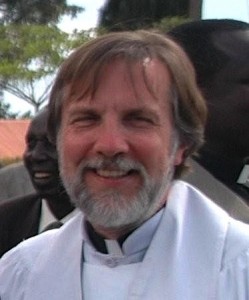 We welcome Rev. Dr. George Byron Koch as our guest blogger for today and tomorrow.
We welcome Rev. Dr. George Byron Koch as our guest blogger for today and tomorrow.
I remember the first time I learned that the early believers, long before they were called “Christians,” referred to themselves as followers of “the Way” of Jesus. I heard it as an apt and beautiful poetic metaphor—which I assumed they had invented for themselves.
I have since learned that the expression actually has deep Jewish and rabbinic roots, and this has opened my eyes to something truly fundamental in following Him—something we have often forgotten, or didn’t fully realize we knew. It is a rich treasure. Let me open it up.
First, the great rabbis over the centuries, as well as at the time of Jesus, had passionate and dedicated disciples. When disciples agree to abide by the teachings of a rabbi, they are said to “put his yoke” upon them. When Jesus says, “Put my yoke upon you,” He is literally offering to become your rabbi, your teacher and model. That was and is the expression used by the rabbis to define the relationship.
Second, a disciple is someone who learns “by use and practice.” He obeys the teachings of his rabbi, and emulates his behavior. This is called the “halakha” of the rabbi.
Halakha is a wonderful Hebrew word. It is often translated as “instruction” or “judgment” or “law,” but literally means “to walk.” When you follow a rabbi, you “walk in his way,” you follow in his path, and learn to do what he does. This includes:
- Hearing how he interprets Torah (the written instructions of God through Moses in the first five books of the Bible), which tells religious Jews what to do.
- Hearing how he interprets the Oral Tradition of the Torah to understand what to do in specific situations. This Oral Tradition is said to have begun at Sinai with the giving of the 10 Commandments. (It does predate Jesus.)
- Hearing how he uniquely teaches his disciples about what to do in relationships with others and the world.
- Watching how he acts and emulating his actions.
Or, more simply, doing what he says to do and following his example. Learning by use and practice. When you do this, you have his yoke upon you, and you walk in his way. You follow his halakha.
So, some examples of this (both teaching and example) from Jesus:
He said, “Hear, O Israel! The Lord our God, the Lord is One. And you shall love the Lord your God with all of your heart, mind, soul and strength. This is the first and great commandment. And the second is like unto it: you shall love neighbor as yourself. All the Law and the prophets stand under these two commands.”
He also said, “Love your enemies and pray for them,” and
“Treat others the way you want to be treated.”
Jesus illustrated the two great commands with His parable of the Good Samaritan: A Jew is robbed and beaten and left by the side of the road. A priest and a Levite both pass by without helping. A Samaritan stops, helps, and even pays for the man’s recovery in a local inn.
Jesus asks, “Who acted as a neighbor?”
The expert in Torah, hearing this story, answers, “The one who showed mercy.” That is the Samaritan.
According to the Jews, the Samaritans misunderstood the nature of God and Torah (bad theology), worshiped on the wrong mountain (bad tradition). They had their doctrine and worship wrong, and so religious Jews would have nothing to do with them. The Samaritans regarded the Jews with the same disdain.
But the Samaritan who acted to help the injured man, he was the true neighbor who fulfilled the second great commandment: He loved his neighbor as himself. He acted to fulfill the commandment.
When Jesus healed a man blind from birth, or raised others from the dead, when he invited himself to eat with Zacchaeus, or forgave a woman of bad reputation, or a crippled man, or spoke with a Samaritan woman at the well, he demonstrated to his disciples how to act in relationship with others – including those who sin or that we consider in error in their beliefs and worship.
He repeatedly told them to serve others, especially those poor, or sick, or in jail—and in so doing, they would be serving Him.
So we began as followers of the Way of Jesus, of His teaching and modeling how to act to love and serve.
But…
What Happened? Tomorrow will give an answer.
Author
The Rev. Dr. George Byron Koch (coke) is the Chairman of the Board of Act3 Network, and a strong advocate for unity in the body of Christ. He has been the Pastor of Resurrection Church in West Chicago since June of 1994. He’s the author of several books, most recently What We Believe and Why, a primer on the Christian faith and life, now in use across denominations in more than 64 countries. He is also the author of numerous newspaper and magazine articles, from Christianity Today to The Wall Street Journal. His personal website is at GeorgeKoch.com.








wonderfully describes the essence of discipleship
Joseph L Schafer liked this on Facebook.
Jim Sutton liked this on Facebook.
Anita Siml Armstrong liked this on Facebook.
To be followers of The Way, a post by Rev Dr George Byron Koch http://t.co/0tOICENE8S